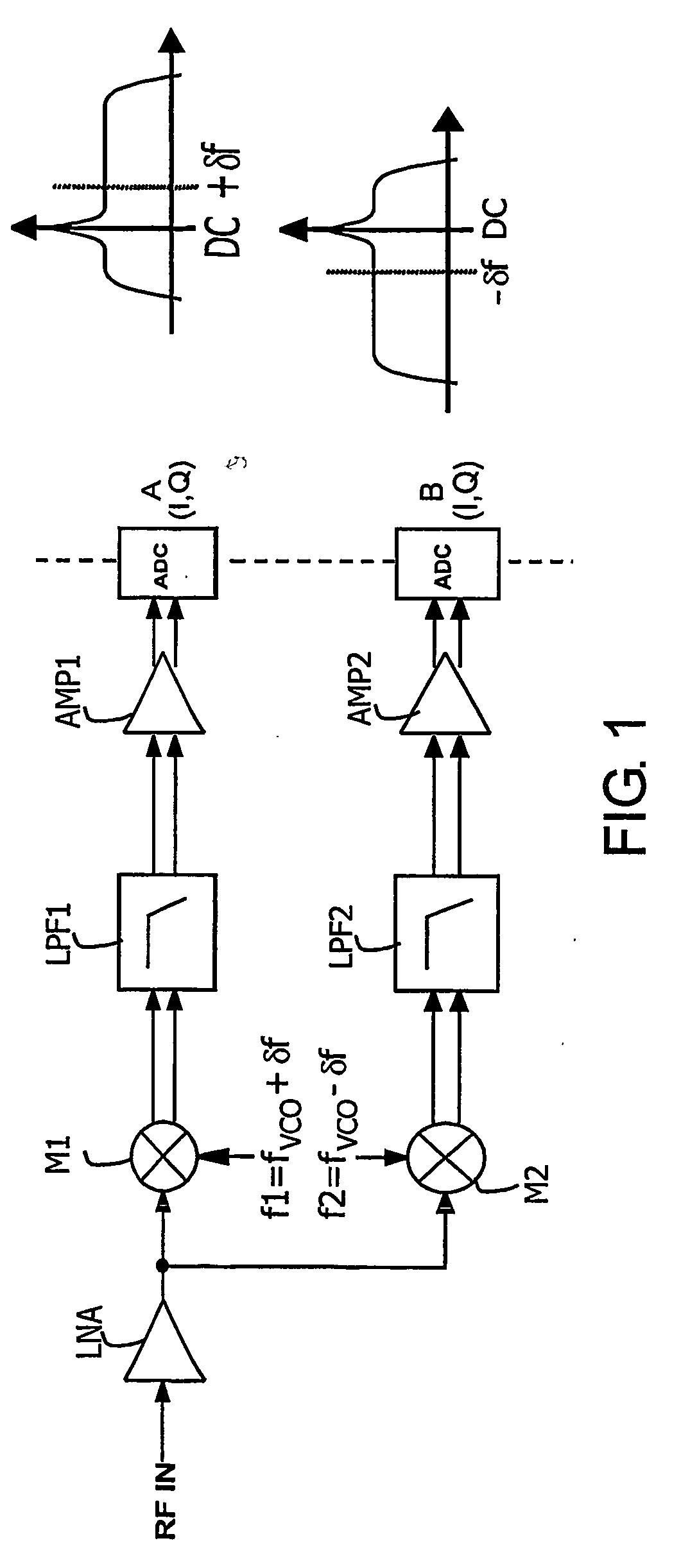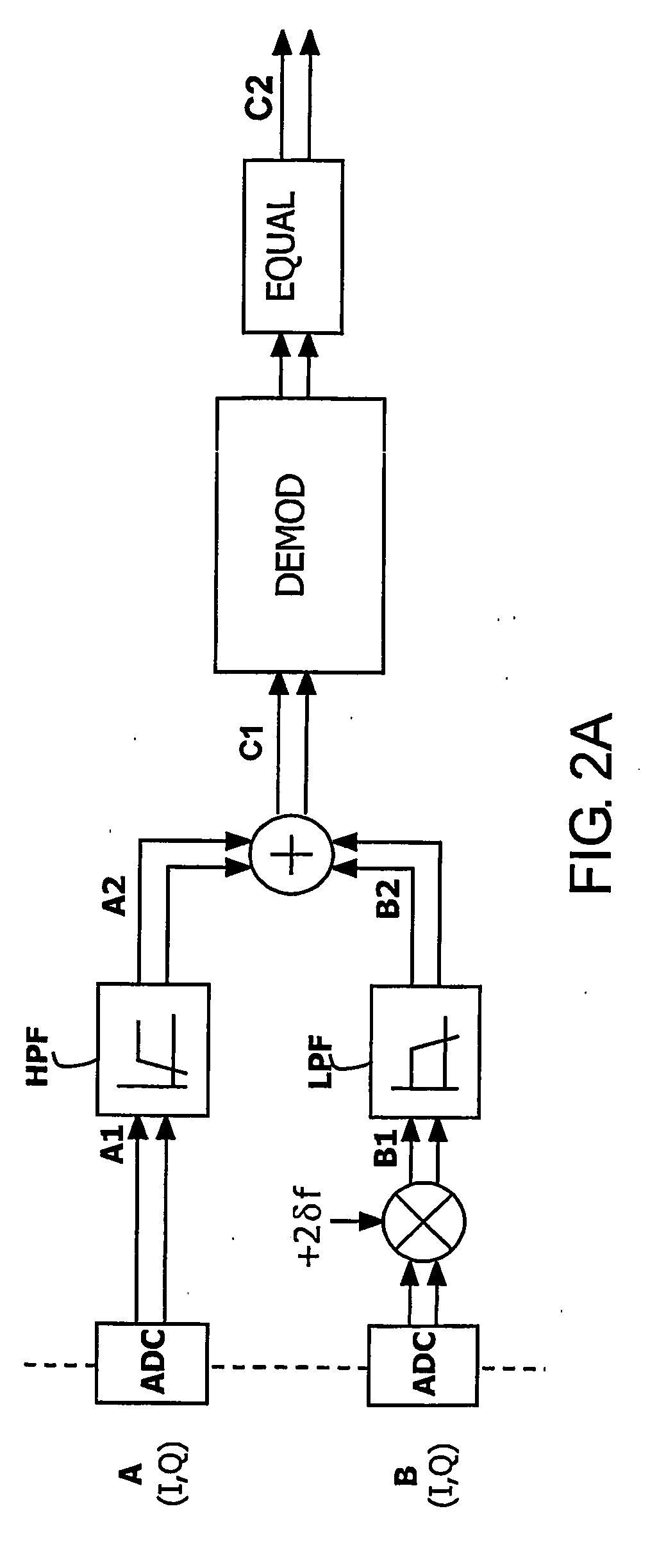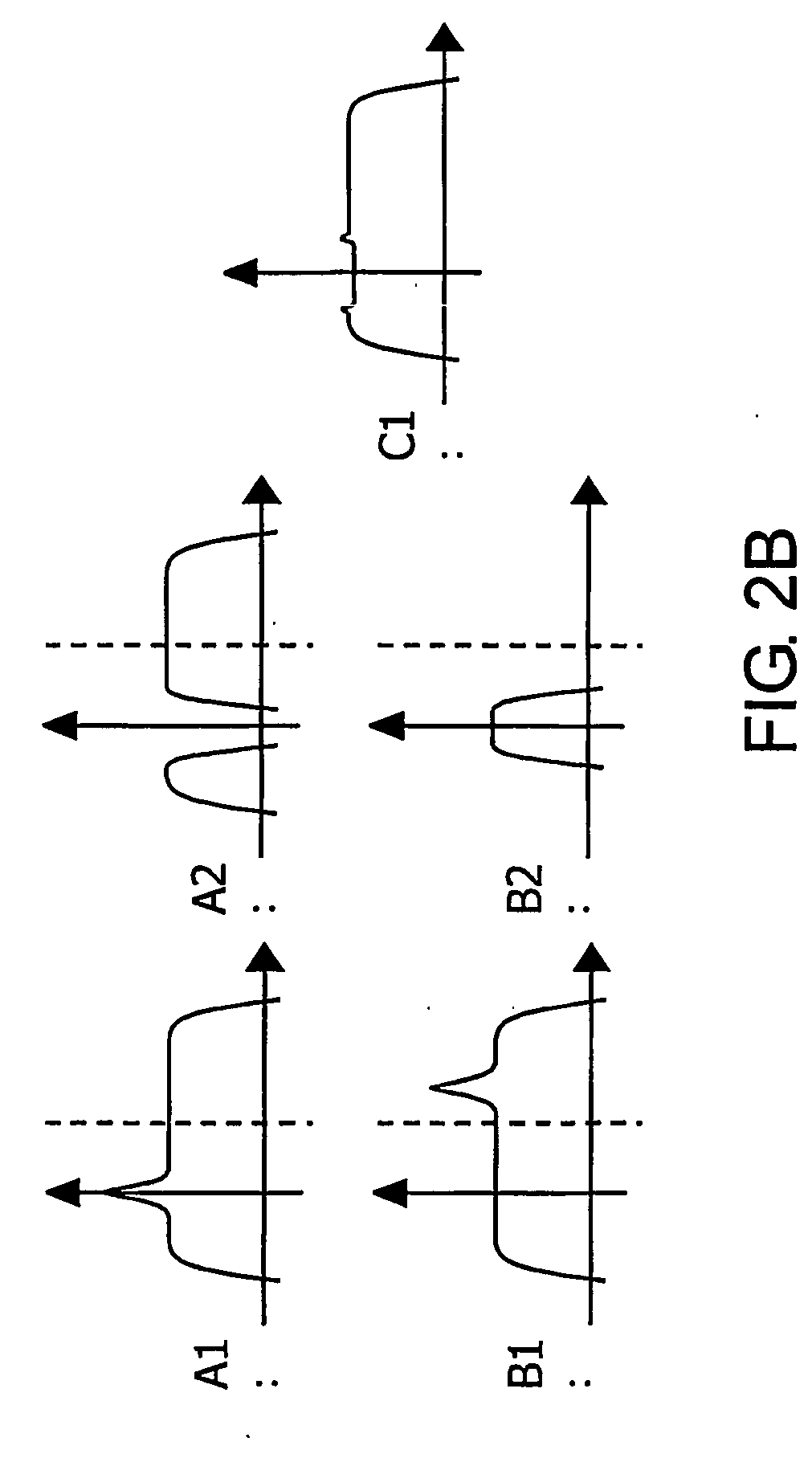Receiver comprising multiple parallel reception means
a technology of receiving means and reception means, which is applied in the field of signal transmission, can solve the problems of large cost and complexity of implementation, and the noise signal in 1/f has a tendency to interfere with the spectrum of the received signal,
- Summary
- Abstract
- Description
- Claims
- Application Information
AI Technical Summary
Benefits of technology
Problems solved by technology
Method used
Image
Examples
first embodiment
[0025]FIG. 2A illustrates the part devoted to the digital processing of a digital receiver, whose analog part is illustrated in FIG. 1, according to the invention. It comprises the two converters ADC in parallel, one on each reception channel, which mark the passage between the analog processing illustrated in FIG. 1 and the digital processing which follows. In the example illustrated in FIG. 2A, the spectra issuing from the two distinct channels are recombined as a single spectrum by means of a partial addition of the two spectra. This partial addition is carried out by the following means. On one of the two channels, here channel A, high-pass filtering means HPF filter the signal received in a first frequency band around the noise frequency in 1 / f, here for example the zero frequency (DC). On the other channel, here channel B, shifting means, represented by a mixer, shift the spectrum of the signal received by the difference, here equal to +2 δf, between the first and second recep...
third embodiment
[0031]FIG. 4 illustrates the part devoted to digital processing of a digital receiver according to the invention. In the example illustrated in FIG. 4, the spectra coming from the two distinct channels are recombined as a single spectrum by means of an equalizer. The means used in this embodiment are identical to those used in the embodiment illustrated in FIG. 3A as far as the output of the two mixers. Next, the standard digital processing of the receiver is carried out in parallel on each channel. The two signals are then added in the equalizer EQUAL in order to continue the processing of the receiver as far as decoding.
[0032]FIG. 5 depicts an example of a transmission system according to the invention which comprises an emitter 51 for emitting electrical signals, a transmission medium 52 for transmitting the said signals and a receiver 53 for receiving them. The receiver 53 is for example of the digital television receiver type according to the DVB-S standard or a mobile radio re...
PUM
 Login to View More
Login to View More Abstract
Description
Claims
Application Information
 Login to View More
Login to View More - R&D
- Intellectual Property
- Life Sciences
- Materials
- Tech Scout
- Unparalleled Data Quality
- Higher Quality Content
- 60% Fewer Hallucinations
Browse by: Latest US Patents, China's latest patents, Technical Efficacy Thesaurus, Application Domain, Technology Topic, Popular Technical Reports.
© 2025 PatSnap. All rights reserved.Legal|Privacy policy|Modern Slavery Act Transparency Statement|Sitemap|About US| Contact US: help@patsnap.com



